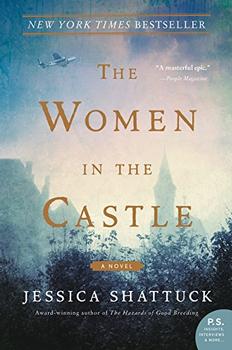Summary | Excerpt | Reading Guide | Discuss | Reviews | Beyond the Book | Read-Alikes | Genres & Themes | Author Bio

This article relates to The Women in the Castle
The events of The Women in the Castle are set off by a failed attempt at assassinating Adolf Hitler conducted by the husbands of the main characters and their fellow resisters. This is based on the real-life July Plot, also known as Operation Valkyrie.
 The plan was organized and executed in 1944 by high-ranking German military officials who disapproved of Hitler's leadership and hoped to bring about a quick end to World War II. The strategy called for detonating two bombs inside a steel bunker where Hitler would be conducting a meeting with about 20 German officers. The bomb would be planted by Colonel Claus Schenk von Stauffenberg, chief of staff of the reserve army. Once Hitler was dead, the reserves would rise up against the Nazis.
The plan was organized and executed in 1944 by high-ranking German military officials who disapproved of Hitler's leadership and hoped to bring about a quick end to World War II. The strategy called for detonating two bombs inside a steel bunker where Hitler would be conducting a meeting with about 20 German officers. The bomb would be planted by Colonel Claus Schenk von Stauffenberg, chief of staff of the reserve army. Once Hitler was dead, the reserves would rise up against the Nazis.
The first problem was a change in venue from the steel bunker to a well-ventilated hut that would make the blast much less likely to be deadly. Then, Stauffenberg was only able to arm and place one of the bombs inside the room. He placed the weapon, concealed in a briefcase, as close to Hitler as possible and left the premises. Unbeknownst to him, the briefcase was moved by another officer. The bomb's blast killed four inside the hut, including the man who moved the bomb, but Hitler escaped the ordeal with minor injuries.
After the detonation, the reserve army awaited confirmation of Hitler's death, which never came. Had they acted immediately, they might have still pulled off a successful coup, but the delay cost them momentum, and the news that Hitler survived put an end to the plan. In the months that followed, conspirators, around 200 in total, were rounded up and executed. Claus Schenk von Stauffenberg, who is briefly mentioned by name in The Women in the Castle reportedly shouted "Long live holy Germany" before his death. The war carried on until the spring of 1945, when Hitler committed suicide and Germany surrendered to the Allies.
The novel provides an intriguing alternative perspective to these events, that of Marianne, the wife of one of the resisters, who must try to maintain calm in front of her children while she knows the plot is imminent. When the news of its failure is broadcast on the radio, she hides the true source of her distress in front of the house staff, lest she be labeled a traitor. While the plot itself is only a brief moment in the book, the rest of the narrative is driven by this event, as Marianne attempts to gather and protect the families of the resisters as a way of honoring their legacy.
Image: Colonel Claus Schenk von Stauffenberg
Filed under People, Eras & Events
![]() This "beyond the book article" relates to The Women in the Castle. It originally ran in May 2017 and has been updated for the
January 2018 paperback edition.
Go to magazine.
This "beyond the book article" relates to The Women in the Castle. It originally ran in May 2017 and has been updated for the
January 2018 paperback edition.
Go to magazine.
Your guide toexceptional books
BookBrowse seeks out and recommends the best in contemporary fiction and nonfiction—books that not only engage and entertain but also deepen our understanding of ourselves and the world around us.